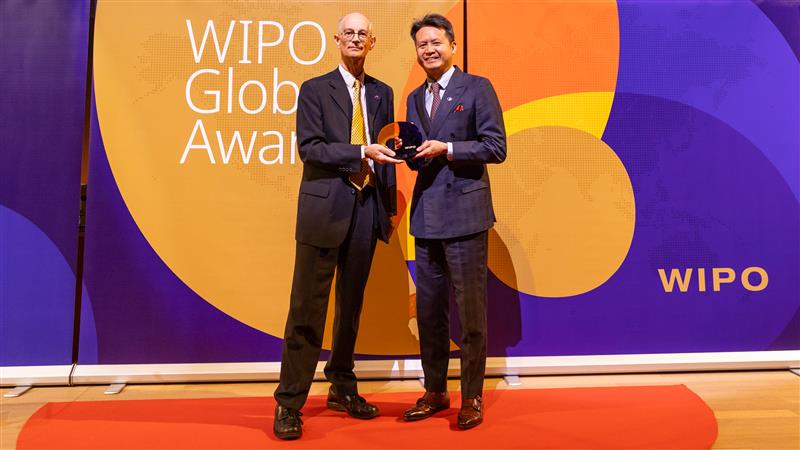Brexit
Does a design have to be disclosed first in the EU to benefit from Community Unregistered Design Right?
Oktober 2019
A case before the Intellectual Property Enterprise Court (IPEC) has raised this important question in a direct reference to the Court of Justice of European Union. Not only is an answer to this question of crucial importance to design protection in the EU in its widest sense, with the Brexit on the horizon it could impact where UK designers disclose their designs for the first time, the UK or EU in a post Brexit world.
In July the Intellectual Property Enterprise Court (IPEC) heard a case where, unusually, no facts of the case were in dispute – the issues raised were solely in respect of a point of European Union design law – Beverly Hills Teddy Bear Company v PMS International Group plc [2019] EWHC 2419 (IPEC)
The Beverly Hills Teddy Bear Company (BHTB) is a Californian company which sells animal-like toys called ‚Squeezamals‘. BHTB sought to protect the designs of the toys by means of registered community designs, unregistered community designs (UCDs) and copyright in the design drawings. Six Squeezamals were relevant to this action, being a dog, monkey, panda, penguin, unicorn and a cat.
The defendants, PMS International Group PLC, (PMS) were seeking summary judgment which would have the effect of striking out part of the claim by BHTB. The case concerned only UCDs. Both sides agreed that five of the six toys (all but the unicorn) were first shown to the public in October 2017 at a trade fair in Hong Kong. The toys were subsequently exhibited for the first time in the EU at the Nuremberg Toy Fair in Germany in January 2018.
PMS argued that the relevant date for assessing the novelty of a UCD was the date on which the UCD comes into being, as governed by Art 11 of the Design Regulation. So, in this case, PMS contended that this would mean all five UCDs in issue first existed at the German toy fair but by then all five designs lacked novelty because of the Hong Kong fair the previous October. Therefore none of those five designs was a protected UCD.
The issue in this application was whether that was a correct analysis of the law on the agreed facts. There had been no clear authority on the point from the CJEU. Previous judgments in Germany, including one from the Federal Supreme Court, as well as divided views among text book authors and commentators in the UK gave no clarity on this matter.
The Judge considered the novelty of the designs. A design cannot be protected as a UCD unless it is new (Art 4(1) Regulation (EC) No. 6/2002 (‚the Design Regulation‘). A design is new if no identical design has been made available to the public before the date on which the design for which protection is claimed was first made available to the public (Art 5(1)(a)). An ‚identical‘ design includes one which differs only in immaterial details (Art 5(2)).
Pursuant to Art 11(1), the period of protection of a UCD runs for three years from the date on which it was first made available to the public within the Community. The words in italics provide a territorial limitation not present in Art 5. It therefore followed that no design can be protected as a UCD unless and until it has been made available to the public within the Community.
The Judge on the whole shared the view of the German Federal Supreme Court in Case I ZR 126/06 Gebäckpresse II, that in order for a design to be afforded UCD protection, the event giving rise to the first disclosure of the design – such as the marketing of a product made according to the design – must first take place within the territory of the EU. If before that date there has been an event outside the EU giving rise to the design being disclosed, in circumstances such that the event could reasonably have become known in the normal course of business to the relevant circles in the Community, the design for which protection is sought will lack novelty.
However, he did not think this view was sufficiently free from doubt to rule on it. Given that Brexit is pending, the Judge took the unusual decision to immediately refer questions to the CJEU himself, rather than leave the question of a reference to be decided by the Court of Appeal should there be an appeal.
The Brexit dimension to these questions, could be of particular importance for UK designers as post-Brexit the UK will be outside the EU and thus UK and indeed other nation designers may take view to disclose in a post-Brexit EU first before proceeding with their design rollout. Also all designers may take the practical option of arranging for the simultaneous release of their designs in their home country e.g. the UK and the EU to at least have the argument the design was released in the EU first, amongst other states.
Questions to be referred
(1) For the protection of an unregistered Community design to come into being under art.11 of Council Regulation (EC) No. 6/2002 of 12 December 2001 (‚the Regulation‘), by the design being made available to the public within the meaning of art.11(1), must an event of disclosure, within the meaning of art.11(2), take place within the geographical confines of the Community, or is it sufficient that the event, wherever it took place, was such that, in the normal course of business, the event could reasonably have become known to the circles specialised in the sector concerned, operating within the Community (assuming the design was not disclosed in confidence within the terms of the final sentence of art.11(2))?
(2) Is the date for assessing the novelty of a design for which unregistered Community design protection is claimed, within the meaning of art.5(1)(a) of the Regulation, the date on which the unregistered Community design protection for the design came into being according to art.11 of the Regulation, or alternatively the date on which the relevant event of disclosure of the design, within the meaning of art.7(1) of the Regulation, could reasonably have become known in the normal course of business to the circles specialised in the sector concerned, operating within the Community (assuming that the design was not disclosed in confidence within the terms of the final sentence of art.7(1)), or alternatively some other, and if so, which date?
This update was prepared by HGF Partner Lee Curtis. Please contact him if you would like further advice on this or any other matter. Alternatively, you can contact your usual HGF representative or visit our Contact page to get in touch with your nearest HGF office.































